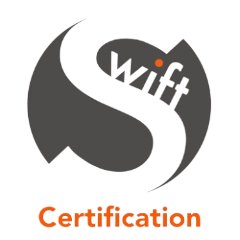In the modern workplace, safety is a paramount concern, particularly when it comes to working at heights. Ensuring the safety of employees in such scenarios is not only a moral obligation but also a legal requirement in many countries, including the United Kingdom. One of the most effective ways to demonstrate a commitment to safety and regulatory compliance is by achieving ISO certification. This guide aims to provide a comprehensive overview of the best practices for working at heights and the relevant ISO standards that can help UK businesses achieve certification.

Understanding the Risks of Working at Heights
Working at heights poses significant risks, including falls, which can result in severe injuries or fatalities. The Health and Safety Executive (HSE) in the UK reports that falls from height are one of the leading causes of workplace fatalities and major injuries. To mitigate these risks, it is essential to implement robust safety measures and adhere to established standards.
The Importance of ISO Standards
ISO (International Organization for Standardization) standards provide a globally recognised framework for best practices in various aspects of business operations, including health and safety. For businesses involved in activities that require working at heights, ISO standards offer a structured approach to managing risks and ensuring compliance with legal requirements.
Key ISO Standards for Working at Heights
ISO 45001:2018 – Occupational Health and Safety Management Systems
ISO 45001:2018 is the primary standard for occupational health and safety management systems. It provides a framework for organisations to improve employee safety, reduce workplace risks, and create better, safer working conditions. Key aspects include:
- Identifying and assessing risks associated with working at heights.
- Implementing control measures to mitigate identified risks.
- Providing adequate training and equipment for employees.
- Regularly monitoring and reviewing safety practices.
ISO 9001:2015 – Quality Management Systems
While ISO 9001:2015 primarily focuses on quality management, its principles can be applied to safety management processes as well. Implementing ISO 9001 can help ensure that safety protocols for working at heights are consistently applied and continuously improved.
Steps to Achieving ISO Certification for Working at Heights
Conduct a Risk Assessment
The first step towards achieving ISO certification is conducting a thorough risk assessment. Identify all activities that involve working at heights and evaluate the potential hazards. This process should involve:
- Consulting with employees who work at heights to understand the challenges they face.
- Reviewing accident and incident records to identify common risks.
- Assessing the condition and suitability of equipment used for working at heights.
Develop and Implement Safety Policies
Based on the risk assessment, develop comprehensive safety policies that address the identified risks. These policies should include:
- Procedures for safe use of ladders, scaffolding, and other equipment.
- Emergency response protocols in case of accidents or incidents.
- Guidelines for personal protective equipment (PPE) use.
Provide Training and Awareness Programs
Ensuring that all employees are adequately trained is crucial for effective implementation of safety measures. Training programs should cover:
- Proper use of equipment and PPE.
- Recognising and reporting hazards.
- Safe working practices and emergency procedures.
Monitor and Review Safety Practices
Regular monitoring and review of safety practices are essential to maintain compliance with ISO standards. This involves:
- Conducting regular safety audits and inspections.
- Reviewing and updating safety policies based on audit findings.
- Encouraging feedback from employees to identify areas for improvement.
Document Processes and Procedures
Proper documentation is a key requirement for ISO certification. Ensure that all safety policies, procedures, and training programs are thoroughly documented. This documentation should include:
- Detailed records of risk assessments and safety audits.
- Training records for all employees.
- Incident reports and corrective actions taken.
The Certification Process
Achieving ISO certification involves an external audit conducted by a certified body. The certification process typically includes:
- Pre-Assessment Audit
- A pre-assessment audit helps identify any gaps in compliance and provides an opportunity to address them before the formal audit.
- Stage 1 Audit
- The Stage 1 audit involves a review of the organisation’s documentation and readiness for the full audit. This stage focuses on evaluating the documented safety management system against ISO requirements.
- Stage 2 Audit
- The Stage 2 audit is a comprehensive evaluation of the implementation of the safety management system. This includes on-site inspections, interviews with employees, and a review of records and documentation.
- Certification Decision
- Based on the findings of the Stage 2 audit, the certification body will decide whether to grant ISO certification. If successful, the organisation will receive an ISO certificate, which is typically valid for three years, subject to annual surveillance audits.
Benefits of ISO Certification
Achieving ISO certification for working at heights offers numerous benefits, including:
- Enhanced Safety: Demonstrating a commitment to safety can significantly reduce the risk of accidents and injuries.
- Legal Compliance: ISO certification helps ensure compliance with UK health and safety regulations.
- Reputation and Trust: Certification enhances the organisation’s reputation and builds trust with employees, clients, and stakeholders.
- Continuous Improvement: ISO standards promote a culture of continuous improvement, ensuring that safety practices evolve with changing risks and technologies.
How to Get ISO Certification?
ISO Certification costs vary depending on your business, we offer competitive pricing and a unique client led approach to our auditing services. Contact us today for a FREE, no obligation quote – Call us on 0161 470 5352 or fill out a form here and a member of our team will be in touch
Conclusion
Working at heights presents unique challenges that require a structured approach to safety management. By adhering to ISO standards, UK businesses can effectively manage these risks, ensure legal compliance, and demonstrate their commitment to employee safety. Achieving ISO certification is a rigorous process, but the benefits far outweigh the effort, leading to a safer, more efficient, and reputable organisation.
For businesses looking to achieve ISO certification, the journey starts with a commitment to safety and a willingness to continuously improve. With the right approach and dedication, ISO certification is within reach, providing a robust framework for managing the complexities of working at heights.



